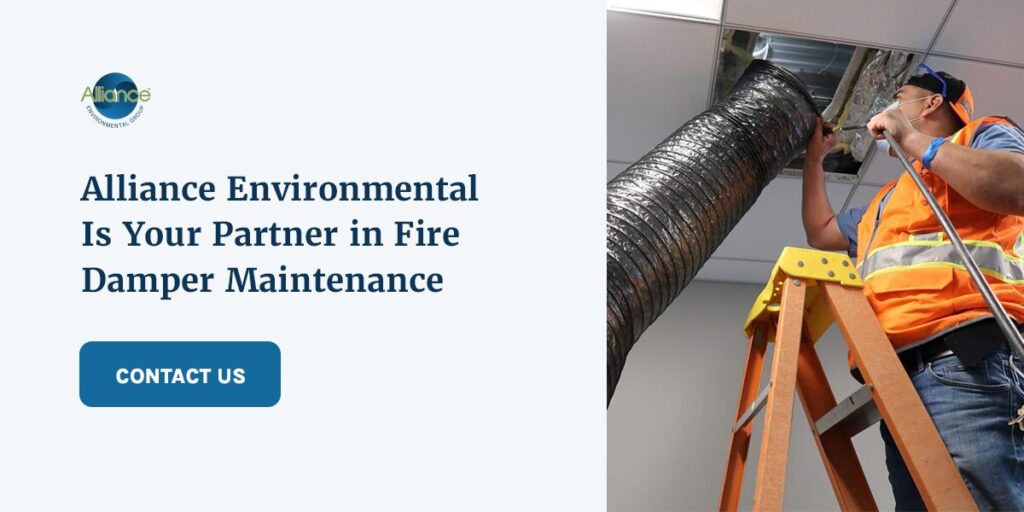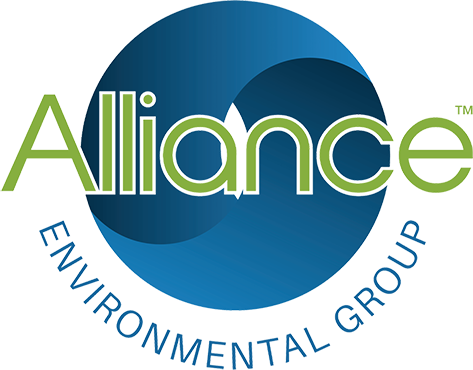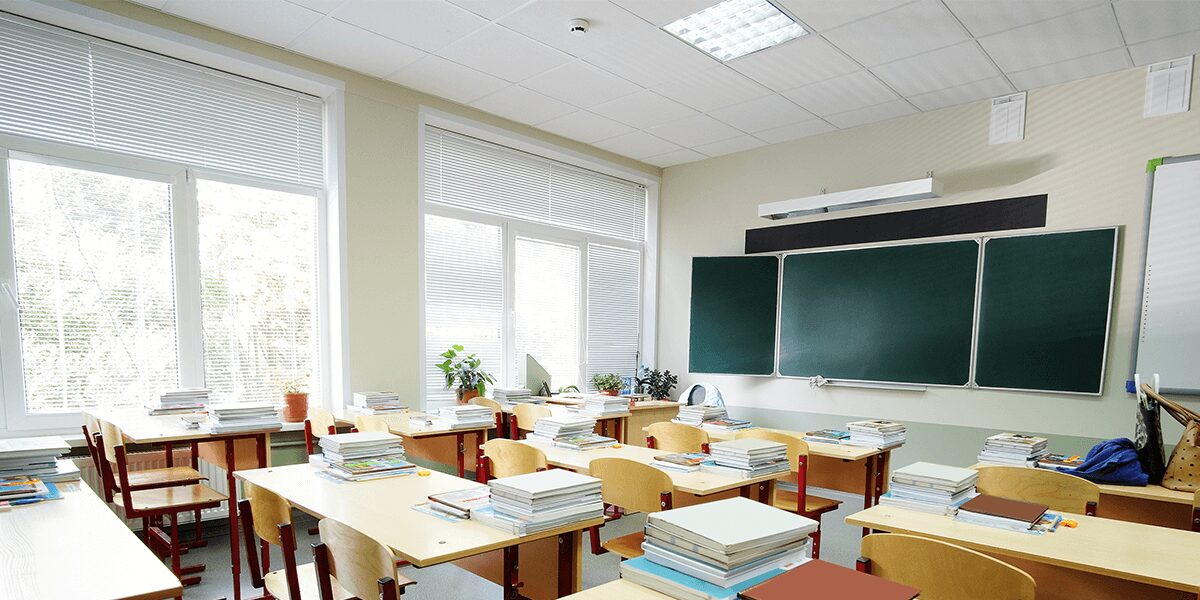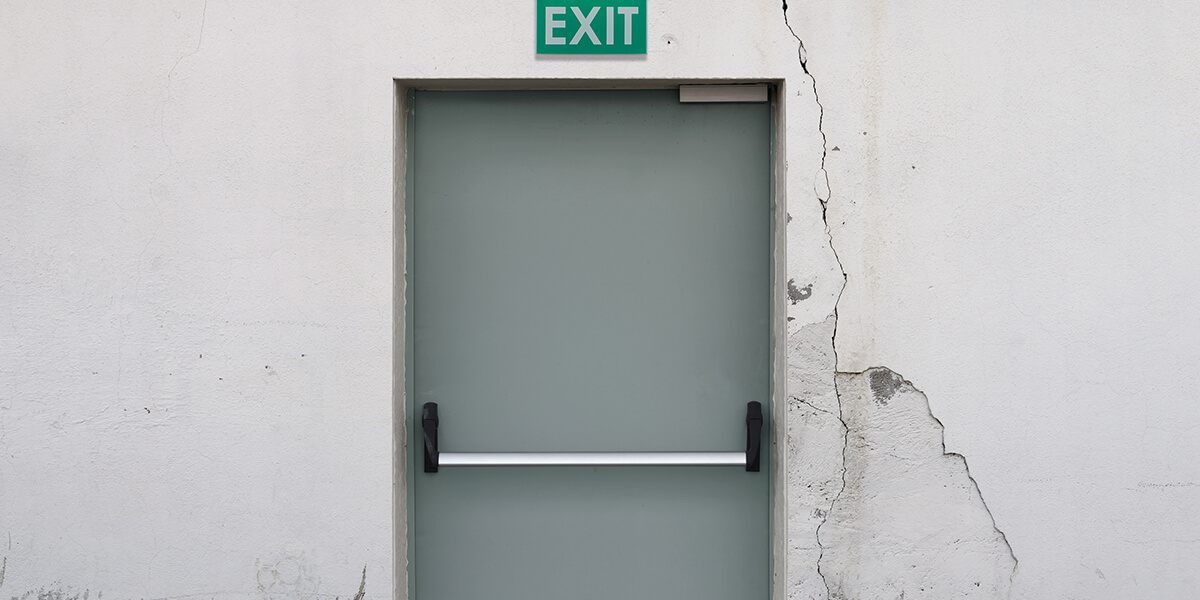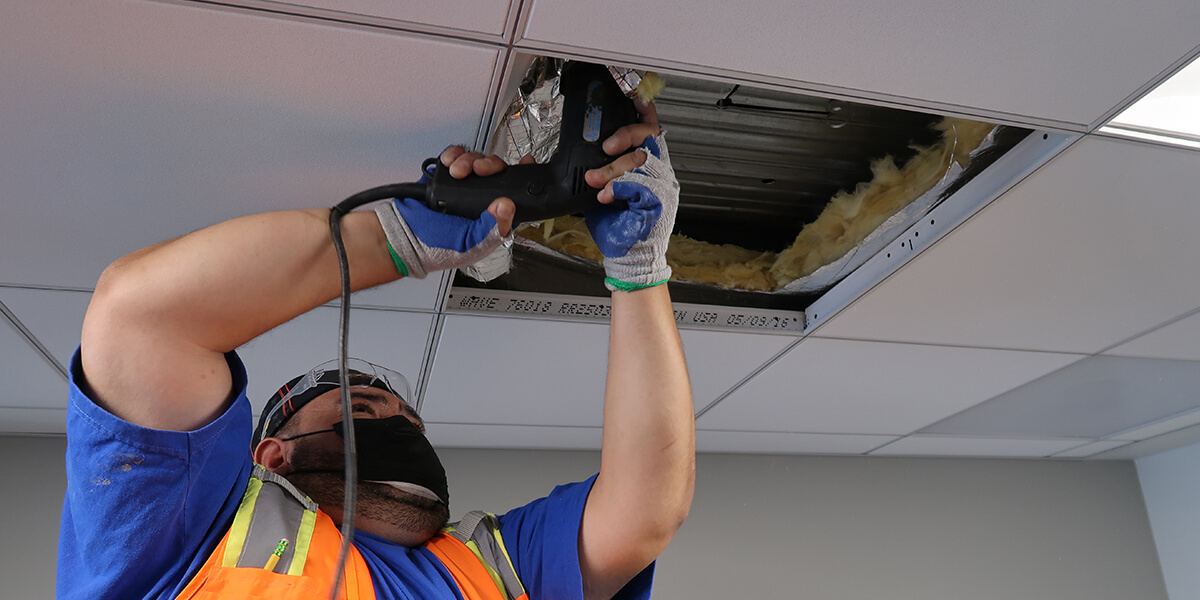
Located throughout a building’s ductwork and HVAC system, dampers prevent fire and smoke from moving throughout the premises in urgent situations. Fire and smoke dampers are a crucial component of healthcare safety compliance, but damper maintenance is often overlooked.
Why do fire dampers matter in healthcare facilities? How can you ensure your fire dampers are compliant and work as intended? Here’s how to prepare fire dampers for healthcare facilities and maintain regulatory compliance so you can cultivate a safe environment for staff, patients and visitors.
The Role of Fire Dampers in Healthcare Facility Safety
Fire dampers are essential for healthcare facility safety. HVAC fire dampers protect the ductwork and air transfer openings in a healthcare facility from spreading fire and smoke, giving occupants more time to leave the building during a fire so firefighters can access it with ease. Here’s how it works:
- The fire damper reacts when temperatures rise to a specific point, typically 165 degrees Fahrenheit.
- The sensors attached to the dampers activate, moving the actuators to their safety position.
- The fusible link connected to the damper then melts, causing the damper doors to close.
In fire emergencies, the leading cause of death is smoke and toxic gas inhalation. Maintaining your facility’s smoke and fire dampers can, therefore, save lives. As they are placed in the ductwork that runs throughout an entire building, they are essential for providing better protection in urgent situations.
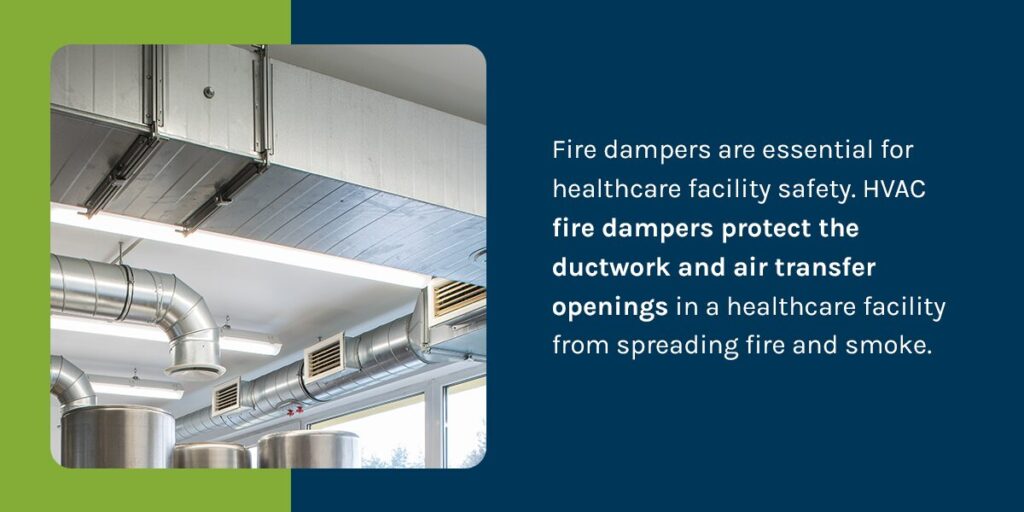
How Fire Dampers Can Help Improve Indoor Air Quality
Fire dampers also play an important role in a healthcare facility’s air quality. Since fire dampers provide air-tight closures for a building’s HVAC system, they help the system function properly. They play a role in maintaining a facility’s humidity levels, circulating air and replacing contaminated air to increase patient comfort. For this reason, the Centers for Medicare & Medicaid Services include fire dampers as part of their healthcare regulatory compliance standards.
By helping HVAC systems replace contaminated air, fire dampers can also help mitigate biohazard risks in healthcare facilities. When you properly manage your facility’s fire dampers, you ensure contaminated air doesn’t replace conditioned air. Inoperable fire and smoke dampers can significantly impact infection control, making it crucial to maintain the dampers in your healthcare facility to reduce the spread of infectious diseases.
Fire Dampers and Their Impact on Healthcare Facility Insurance
It’s important to conduct regular fire damper maintenance, as fires can significantly impact insurance premiums and claims. Fire is one of the most dangerous, destructive elements that can affect any property.
The challenges and costs of rebuilding your facility can lead to closures and financial instability. Fires are also a huge source of expensive insurance claims. Since HVAC fire dampers help reduce the spread of fire and its impact on insurance, ensuring their operability is crucial.
Insurance companies often require proof of damper testing when assessing claims for fire damage — following compliance regulations can help.
- Underwriters Laboratories: The Underwriters Laboratories’ 555 fire damper test standard was developed in 1966 to ensure fire dampers function properly in fire conditions. It has since been revised to address new discoveries in protection strategies and technologies. Dampers must meet stringent operational reliability, temperature resistance and air leakage resistance standards to pass the test.
- The National Fire Protection Association: Additionally, the National Fire Protection Association offers requirements and recommendations for fire damper inspection, testing and maintenance. It’s crucial to review these guidelines and use them as a basis for your facility. Working with a professional team can help you become and remain compliant, especially as certain standards can be complex and time-consuming to follow.
Fire Damper Failure: Causes, Consequences and Prevention
Learn the causes and consequences of fire damper failure and how to prevent it:
- Lack of proper maintenance: When fire dampers are triggered, the blades are closed by springs — closing off the opening. If the springs have jammed or corroded or the blades have been damaged or collapsed, the system will fail.
- Incorrect installation: Using a damper that is the wrong size, installed upside down, facing the wrong direction or the wrong type can cause an HVAC fire damper to fail.
- Misuse: There are many ways a damper could be handled improperly, such as accidentally running cables through it, which can prevent it from closing fully.
Healthcare facilities can prevent fire damper failure with regular HVAC fire damper cleanings and scheduling maintenance to determine if repairs are needed. Cleaning any dirt or debris can ensure the fire damper closes properly and functions.
Debunking Common Fire Damper Misconceptions
What are some common misconceptions about fire dampers?
- Fire dampers impede airflow: Fire dampers are a key part of any HVAC system, new or old. Fire can strike at any time, making dampers essential in preventing its spread throughout the ductwork.
- Fire dampers require minimal maintenance: Another misconception is that fire dampers don’t require regular maintenance. In reality, fire damper inspections and maintenance are crucial to ensure they work properly when needed. Neglecting maintenance can put lives and property at risk.
- Fire dampers are only for new construction: Another myth is that fire dampers can disrupt a facility’s airflow. While they can slightly impact airflow, modern designs are designed to minimize this function, allowing efficient ventilation and fire protection.
Choosing the Right Fire Damper Solutions for Your Healthcare Facility
The fire dampers that are best for your facility will depend on various factors, but compatibility with your HVAC system will be the most important. Consider the following when choosing the appropriate fire damper services for your facility:
- The required fire rating
- The type of fire damper
- The type of installation required
- The type of closing mechanism
Alliance Environmental Is Your Partner in Fire Damper Maintenance
At Alliance Environmental, we offer several fire damper solutions for healthcare facilities, helping organizations just like yours maintain a safe environment. Having a reliable partner on your side to supply professional fire damper inspections and repairs is crucial, especially because the National Fire Protection Association has strict fire damper testing requirements.
With over 25 years of experience and more than 200,000 jobs complete, we can help your facility ensure fire life safety, indoor air quality and more. Explore our solutions for commercial properties and contact us today to learn more.
